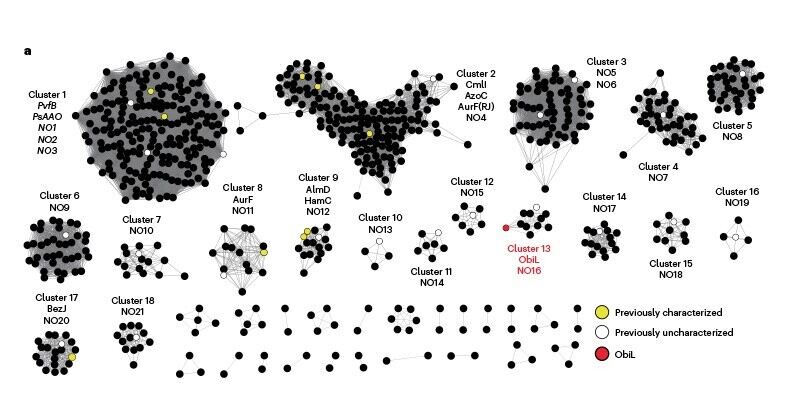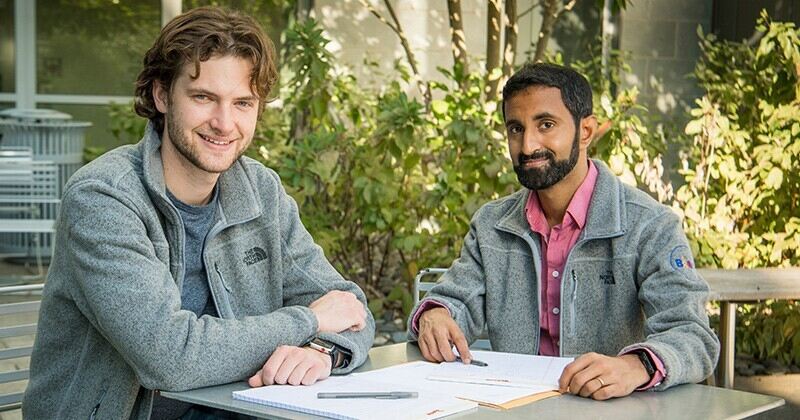UD engineers create bacteria that can synthesize an unnatural amino acid
Amino acids are the individual building blocks of proteins and are essential for biological systems to work properly. There are 20 standard amino acids that make up proteins in all living systems, more than 500 different types of other amino acids found in nature, and a large number of man-made amino acids. Some of these alternative amino acids can help create new types of pharmaceuticals and therapeutics.
Now, University of Delaware researchers in the lab of Aditya Kunjapur, assistant professor in the College of Engineering’s Department of Chemical and Biomolecular Engineering, have engineered bacteria to synthesize an amino acid that contains a rare functional group that others have shown to have implications in the regulation of our immune system. The researchers also taught a single bacterial strain to create the amino acid and place it at specific sites within target proteins. These findings, published in Nature Chemical Biology, provide a foundation for developing unique vaccines and immunotherapies in the future.
The Kunjapur Lab uses tools from synthetic biology and genetic engineering to create micro-organisms that can synthesize different types of compounds and molecules, especially ones with functional groups or properties that are not well represented in nature.
In this study, the researchers focused on para-nitro-L-phenylalanine (pN-Phe), a non-standard amino acid that is neither one of the twenty standard amino acids nor been observed in nature. pN-Phe has been used by other research groups to help the immune system mount a response to proteins that it does not ordinarily respond to.
“The nitro chemical functional group has valuable properties and has been underexplored by folks who are trying to rewire metabolism,” Kunjapur said. “pN-Phe also has a nice history in the literature — it can be added onto a protein from a mouse, delivered back to mice, and the immune system will no longer tolerate the original version of that protein. That ability has promise for the treatment or prevention of diseases that are caused by rogue proteins that the immune system struggles to lock onto.”
This paper shows the first demonstrated synthesis of pN-Phe in Escherichia coli and is one of only a handful of publications that feature an organism designed to autonomously create and harness an expanded genetic code. Genetic code expansion methods allowed the researchers to increase the “alphabet” of available amino acids encoded by DNA. By coupling metabolic engineering techniques with genetic code expansion, the researchers were able to create a system that produces nitrated proteins autonomously.
“Because of the nitro functional group chemistry, the amino acid that we picked as our target for this project was unconventional, and many scientists within our field may not have expected that it could be made using biosynthesis,” Kunjapur said.
The next step for this research is to optimize their methods to synthesize higher amounts of nitrated proteins and expand this work into other microorganisms. The long-term goal is to further refine this platform for applications related to vaccines or immunotherapies, efforts that are supported by Kunjapur’s 2021 AIChE Langer Prize and the 2022 National Institutes of Health Director’s New Innovator Award. To further support this long-term goal, Kunjapur and Neil Butler, doctoral candidate and first author on this paper, co-founded Nitro Biosciences.
“I think the implications are interesting, in that you can take a bacterium’s central metabolism, its ability to produce different compounds, and with a few modifications you are able to expand its chemical repertoire,” said Butler. “The nitro functionality is rare in biology and absent from the standard 20 amino acids, but we showed bacterial metabolism is malleable enough that it can be rewired to create and integrate this functionality.”
Kunjapur added, “Bacteria are potentially useful drug delivery vehicles. We think we have created a tool that could leverage the ability of bacteria to produce target antigens within the body and exploit the ability of nitration to shine a light on those antigens at the same time.”
The complete list of co-authors includes University of Delaware’s Neil Butler, Sabyasachi Sen, Lucas Brown, Minwei Lin, and Aditya Kunjapur. This research was supported by a grant from the National Science Foundation (CBET 2032243).

Article by Erica K. Brockmeier | Photos illustration by Kathy F. Atkinson (featured on UDaily, 05/22/2023)

